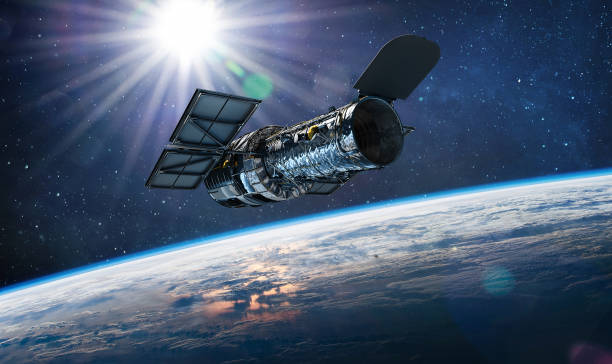The Amazing In the tremendous breadth of the universe, how we might interpret the universe has been changed by the wonders of innovation. Among the most powerful instruments of cosmic investigation is the space telescope. These remarkable observatories circling high over Earth’s air have opened new windows to the universe, permitting cosmologists and researchers to peer further into space and unwind the secrets of heavenly bodies. In this blog, we will dive into the set of experiences, importance, and effect of room telescopes on our journey to fathom the universe.
The Development of Room Telescopes:
The idea of a space-based observatory was first proposed by visionary stargazers like Lyman Spitzer during the twentieth 100 years. The essential benefit of putting telescopes in space is getting away from the misshaping impacts of Earth’s climate, which can obscure and retain light. The Hubble Space Telescope (HST), sent off in 1990, denoted a momentous achievement in this mission for more clear grandiose vision. Circling at a height of around 547 kilometers, the Hubble has given amazing pictures and important information, contributing hugely to how we might interpret the universe.
Past Hubble: An Embroidery of Observatories
While the Hubble Space Telescope stays a symbol of room investigation, it is only one string in the rich embroidered artwork of room telescopes. Different observatories have added assorted points of view to our infinite comprehension. The Chandra X-beam Observatory, for example, centers around the high-energy peculiarities known to man, for example, supernovae and dark openings. The Spitzer Space Telescope, delicate to infrared radiation, has revealed secret infinite diamonds, similar to clean covered star-framing areas.
The Kepler Space Telescope, then again, upset the field of exoplanet studies. By observing the splendor of stars, Kepler identified the unobtrusive darkening brought about by circling planets, prompting the disclosure of thousands of exoplanets. This extended comprehension we might interpret planetary frameworks as well as filled the quest for livable universes past our planetary group.
The James Webb Space Telescope (JWST): A Brief look into What’s to come
As we stand on the slope of another time in space investigation, the James Webb Space Telescope vows to take us much further into the enormous unexplored world. Booked for send off sooner rather than later, the JWST is intended to be the most remarkable space telescope at any point assembled. Working fundamentally in the infrared reach, it expects to divulge the mysteries of the universe’s most memorable worlds, concentrate on the environments of exoplanets, and peer into the dusty locales where stars and planetary frameworks structure.

Influence on Logical Revelations:
The effect of room telescopes on logical disclosures couldn’t possibly be more significant. From refining how we might interpret the age and extension of the universe to giving bits of knowledge into the development of cosmic systems and stars, these observatories have reshaped the scene of astronomy. The Hubble Profound Field pictures, for instance, caught systems that existed when the universe was in its outset, revealing insight into the grandiose development north of billions of years.
Besides, space telescopes play had a significant impact in disentangling the secrets of dull matter and dim energy, two cryptic parts that overwhelm the universe’s mass and energy content. Perceptions from the Chandra X-beam Observatory and different telescopes have given urgent information on the way of behaving of these subtle inestimable elements, pushing the limits of our comprehension.
Instructive and Helpful Effort:
Notwithstanding their logical commitments, space telescopes have become incredible assets for instructive effort and public commitment. The dazzling pictures caught by these observatories spellbind the public’s creative mind, cultivating an interest in science and cosmology. Organizations like NASA have utilized the fame of these space missions to make instructive projects, narratives, and intuitive sites that bring the marvels of the universe into homerooms and lounge rooms around the world.
Challenges and What’s in store:
Notwithstanding their pivotal accomplishments, space telescopes face difficulties and restrictions. The limited life expectancy of their instruments, likely specialized breakdowns, and the significant expenses related with space missions highlight the requirement for proceeded with development and venture. The forthcoming send off of the James Webb Space Telescope is met with both fervor and trepidation, as mainstream researchers enthusiastically expects its likely revelations while recognizing the innate dangers and difficulties of such aggressive undertakings.
In the excursion of investigating the universe, space telescopes stand as reference points of human resourcefulness and assurance. From the famous Hubble Space Telescope to the forthcoming James Webb Space Telescope, these observatories have reshaped how we might interpret the universe and energized our interest in the grandiose woven artwork that encompasses us. As we look into the future, the commitment of new disclosures and the secrets yet to be disentangled coax us to proceed with our mission for information, directed by the groundbreaking effect of room telescopes on the outskirts of room investigation.

The Wonders of Our Solar System